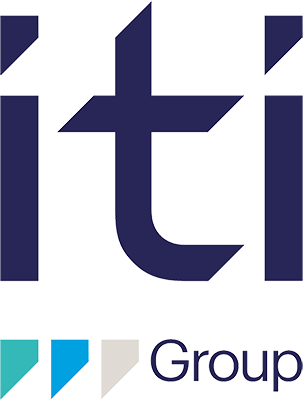The benefits of achieving real-time manufacturing visibility for increased productivity and sustainable growth

After a challenging couple of years, manufacturing leaders welcome reduced production costs, and many see opportunities in net zero, digital technology, cloud and artificial intelligence, according to the Make UK Executive Survey 2024*. For UK manufacturers, this much-needed optimism has put growth plans and cost control at the top of their agenda.
Manufacturers are well aware that digital technology can play a huge role in improving operational efficiencies, reducing costs and creating new innovative products in new markets. Understanding the business value of technology and the power of data from these technologies is essential to the ongoing success of digital transformation projects and ultimately achieving business goals. Manufacturers that embrace technology for increased productivity and sustainable growth must make sure that digital technology is core to business strategy.
Leading manufacturers measure and monitor an agreed set of KPIs and use these to evaluate business performance and as input to decision-making. Traditional metrics such as OEE (Overall Equipment Effectiveness) and downtime are valid when it comes to evaluating overall manufacturing efficiency and productivity, but driving continuous improvement throughout the entire manufacturing process requires additional KPI metrics factoring in all areas that affect productivity.
Read the top 7 benefits of achieving real-time manufacturing visibility for increased productivity and sustainable growth.
1. Utilise real-time data for actionable improvement
Measuring OEE is a great building block for implementing Digital LEAN and performance improvement initiatives. The data presented in a performance system must be acted upon quickly, otherwise, production managers will find it difficult to uncover the root cause of problems. Shop-floor teams are encouraged to use the data to uncover reasons behind process inefficiencies to drive improvement, which creates a culture of continuous improvement, as operators become actively engaged with the system and see the value gained from it.
2. Ensure regulatory compliance & quality
Real-time visibility of quality issues such as non-conformance events or when a process is trending out of control is imperative to achieve improved yield, reduced production waste and avoiding costly product recalls. The impact of product recalls on brand reputation can be immensely damaging and the associated costs/heavy fines (not just production) can be huge. Understanding process capabilities throughout the manufacturing plant are vital to reducing the cost of poor quality, facilitating continuous improvement and carving out a sustainable competitive advantage.
3. Manage energy consumption
Going green has so many wider business benefits, not just controlling costs. Measuring and monitoring energy usage in real-time empowers corrective action across the board, whilst integrating both energy and production data together encourages proactive energy reduction opportunities on the shop floor too!
Companies who practice sustainability can reap the benefits, from strengthened corporate social responsibility, reduced resource and production/operational costs to enhanced recruitment ability, increased sales and brand popularity. ITI Group helped a client in the consumer-packaged goods sector gain insight into energy consumption for strategic decision-making. As a result, they saved approximately £200k in energy costs in just 4 months.
4. Reduce production losses
Availability losses such as planned or unplanned downtime, machine setup time, inventory turns, and changeover times all impact OEE and performance negatively. Crucial information such as the effect of non-productive tasks (e.g. sanitising and labour changeover), when a machine went down and the impact it had on the rest of production is however less accessible. Identifying inefficiencies throughout the production process is essential in providing the real-time information needed to take corrective action.
5. Optimise maintenance activities
Unscheduled maintenance results in lost production, higher part costs, and lost time for fixing problems; costing significantly more than planned maintenance. Adopting a more proactive, preventive maintenance approach to coincide with planned production downtime significantly reduces costs. Preventive maintenance needs to be controlled and managed effectively to keep equipment producing consistently high-quality product. Visibility into equipment availability and performance rates can help reduce unplanned downtime to optimise maintenance activities and gain maximum value from assets.
6. Understand labour costs
Having the right amount of people and a balance of skills on the shop floor is a huge juggling act! Too few will cause bottlenecks and result in missed production deadlines, too many will create unnecessary labour costs impacting profits. Having access to detailed labour information such as how many staff are needed on lines, required skill sets, and how long it took to complete a job will help paint a picture of your labour requirements. Likewise, understanding how efficiently the workforce is performing against output, how profitably jobs are running and realising the true cost of labour are important factors to consider when optimising workforce performance and ensuring maximum productivity.
7. Reduce cost of goods
Most manufacturers include direct materials, labour and overheads when evaluating costs. An understanding of all three is needed when trying to reduce the cost of goods, which can contribute to bottom-line KPIs in the business including increasing profit margin, ensuring business sustainability, and increasing customer satisfaction. Increased visibility through digital technology and real-time data analysis, can lead to reduced cost of goods.
Helping our clients gain real-time visibility of operations
Investing in digital technology to support increased visibility of assets enables manufacturers to address the root cause of business challenges – often a more efficient and cost-effective alternative to investing in new facilities or machinery.
The ITI Consulting team at ITI Group work with clients on their digital transformation journey to understand the key business drivers and recommend the best solutions to deliver tangible business value – helping define and achieve manufacturing KPIs for increased visibility.
- To learn more, visit ITI Consulting
- Discover how we helped our client, WaterWipes, gain real-time visibility of operations to drive actionable improvements for optimised production and increased capacity: Download the case study
*Source: Make UK Executive Survey 2024
